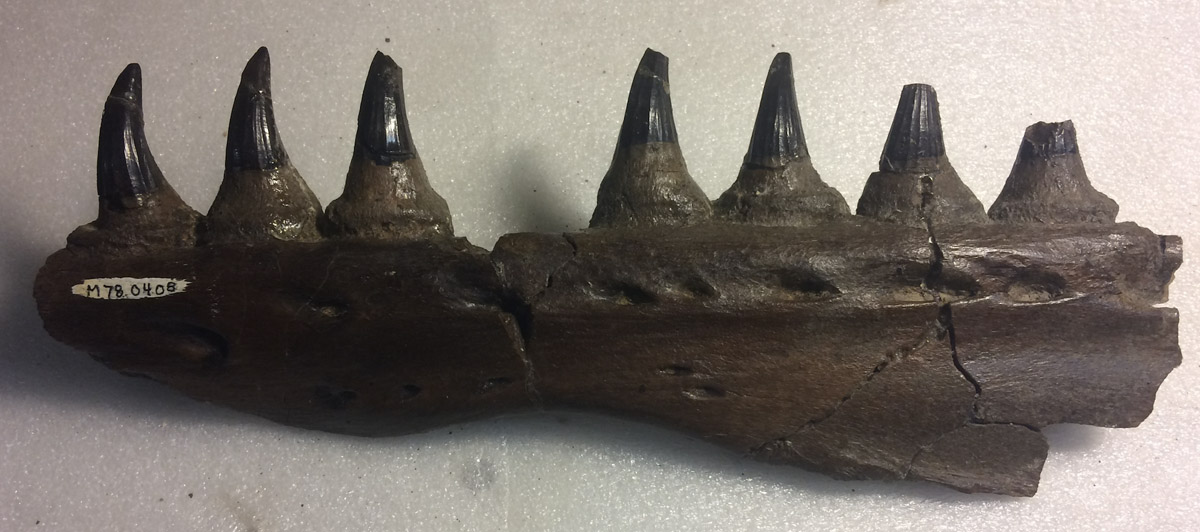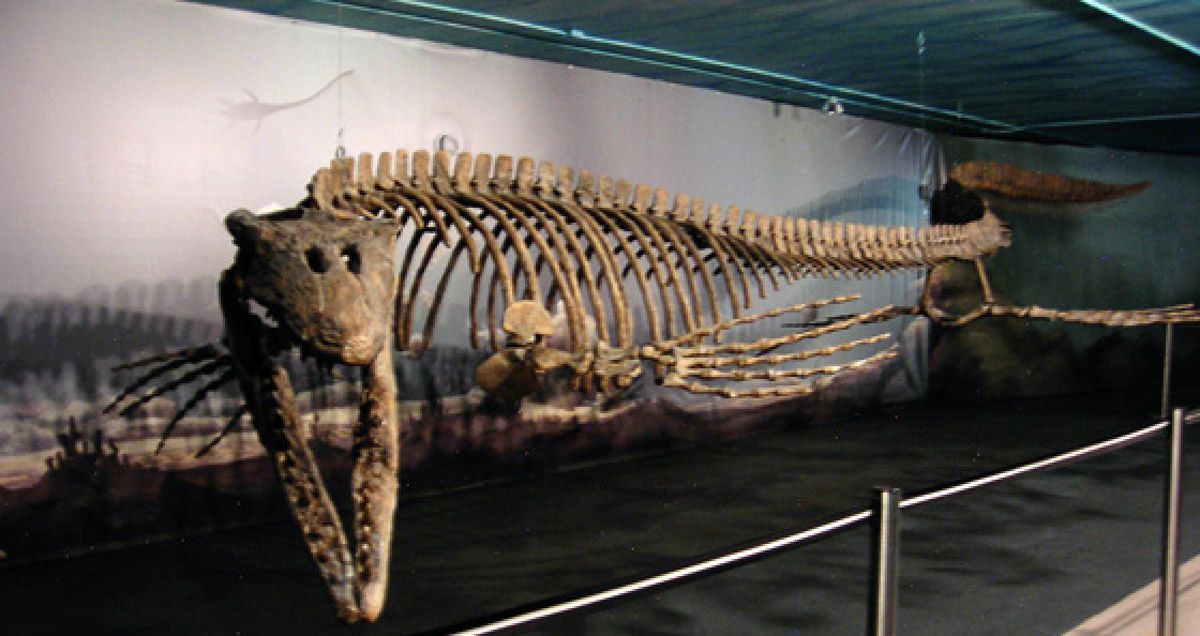Mosasaur Jaw
"Instead of waiting an hour after eating to go swimming, how about we wait a few millennia?"Mosasaur fossil common to southwest Manitoba in Cretaceous period seaway
 Mosasaur Jaw
Mosasaur Jaw
Story
This mosasaur jaw fragment is a good example of the fossils found in southwestern Manitoba. Fossils like this one are a great snapshot of ancient marine life in Manitoba’s distant past.
This now extinct marine reptile was very large; typically more than 4 meters (13 feet) long, but larger ones could have been up to 17 meters (56 feet) in length. They were fierce predators and their size put them at the top of the food chain eating anything in their path including small ammonites (shelled organisms), fish, sea turtles, plesiosaurs, sharks and sea birds. Their tails were exceptionally long and its side to side motion would propel them forward in a snakelike motion, while their large flippers steered.
Mosasaurs have been called the “T-Rex” of the ocean for their role as the dominate predator, but don’t confuse them with dinosaurs, which they do resemble. Mosasaurs were actually lizards and are related to president day monitor lizards. They were air breathers and even gave birth to live young.
See also Bruce
 Bruce, the largest mosasaur on display in the world (Guinness World Book of Records)
Bruce, the largest mosasaur on display in the world (Guinness World Book of Records)